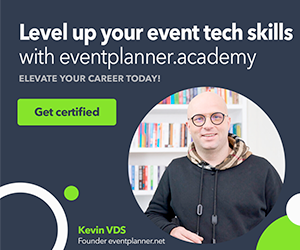Transcript
Hi, Hoyin. Welcome to our studio.
Hi.
How are you doing, Kevin?
I’m fine, I’m fine, thank you.
Thank you for joining us. Today, we’re going to talk about virtual events. Maybe before we dive into the subject, you started the company Remo. Why did you start with that company?
So originally, I started Remo as a virtual office product, and I originally started it back in 2018. I was starting to really get into remote work. I was hiring people remotely. I had a distributed team in total. Now I’ve probably worked in remote teams and running remote teams for over 12 or 13 years now.
I wanted to create something that really created a much more immersive environment, that created authentic conversations, that built meaningful relationships. I first started as a virtual office, but back then, in 2018, remote work still wasn’t really a big thing, and it wasn’t very attractive to a lot of people. So I then pivoted into virtual events, and that turned out to get a lot of traction.
We finished building the product and pivoted it around early 2020, which was just before the pandemic. That’s when things got pretty crazy, and the company grew really fast, with this roller coaster effect. But the core reason for building it was to create something that allowed people to have authentic conversations and be able to talk and network. Even today, with the rise of AI, it was already like this with social media, but it’s exacerbated now. It’s making it harder to connect with people online, so that’s really the core reason.
Okay. But maybe for our viewers and listeners who don’t know your product, if you compare it to a traditional online meeting, like, for example, Google Meet or Webex or whatever, what’s the difference? Can you talk us through how the experience is if you use your products?
Yeah, that’s a great question. You can imagine that you are looking at a top-down view of the map. The camera is situated at the top, and you’re looking down. You see tables, chairs, and essentially, you are represented by a little circle avatar with your picture in it. You would double-click on a table, and your avatar moves to that table. You can double-click on another table, and your avatar moves to that one.
When you go into those individual tables, you only see the people sitting at that table. It’s sort of like a breakout room, but you have the flexibility to move wherever you want, creating your own journey. A lot of online virtual experiences are rigid and structured, but networking is very free-form. It allows people to have a much more immersive experience.
We have different templates and various floor plans. People go crazy with them—spaceships, boats, yachts, hotels, and more. People love the ability to create these immersive environments, but it’s easy to navigate, point and click. It’s not fully like a game, but a bit game-like, allowing people of all ages, even 60 and above, to use it easily.
You mentioned already that the product boomed in the pandemic. Now that the pandemic is gone, what is, in your opinion, the use case for a platform such as yours? When do you use it, and when would you prefer to do in-person events?
There are a couple of scenarios. One is if you’re in charge of a professional association or have customers across the entire United States—your audience is very distributed. Those are great examples of when you might choose virtual over in-person. Another reason is if you want an interactive, engaging way to provide value to your audience more frequently. In-person events are expensive, time-consuming, and not environmentally friendly, so virtual allows you to achieve similar results at a lower cost.
We support use cases like networking, community building, membership engagement, job fairs, trade expos—events where people need to meet and move around. We work with women’s organizations, for example, with mentor-mentee relationships. It’s a flexible platform for that.
Are there events where you would suggest not doing them in a virtual reality environment?
Yes, definitely. If you have an event where human connection is crucial, like an annual gala or dinner, those should probably be in person. Similarly, if the event is regional and people can gather easily, in-person makes sense. Virtual is best when travel and logistics are more complicated.
One thing that’s becoming really popular these days are hybrid events. How do you see that? Is that possible with platforms like yours?
Yes, we can do hybrid events. Hybrid events are becoming more popular now, situated between virtual and physical. One challenge with hybrid is that people often think it’s easier or cheaper, but it actually requires much more organization and cost. You need separate resources for both the virtual and physical sides, like extra AV equipment.
We can facilitate hybrid events. We have many customers whose online community is even bigger than their physical audience. We act as the software system that pipes live content to online attendees while conducting the event in parallel.
You mentioned something interesting, that you need more resources. Can you elaborate a little bit on that? What do you mean by that?
Sure. Many people think you need fewer resources for online events, but that’s not the case. You still need customer support, technical support, especially for large events, and facilitators to manage both virtual and physical attendees. It requires almost as much effort as organizing an in-person event.
From a user perspective, joining such a hybrid event virtually, am I correct to assume they can follow the sessions broadcasted from the live event, but networking is only among virtual participants?
Yes, that’s correct. Right now, virtual participants network with each other, and physical attendees do so in person. There hasn’t been a successful solution to bridge the two yet.
How do you see the future of that? Are there any ideas on merging those two experiences?
I’d love to see some technology bridge the gap, but I haven’t seen any successful solutions. We’ve tried it. One customer in the US set up telephone booths with computers so attendees could interact with virtual participants. But human behavior tends to default to the highest resolution—people prefer talking to someone in person over going online, and that’s a challenge.
Let me know if you’d like any further changes!
Do you have any use cases you can talk about where you can say, okay, there we did a virtual event and that really changed things for the organizers?
Yeah, we do. We’ve done a lot of online networking and community-building events, workshops, and training. We also facilitate mentor-mentee relationships, where one round people talk to one group, and the next round they meet a different group.
We have one customer that organizes community-based events where people network as part of a webinar or event. Someone presents, and afterward, or even before, there’s a lot of networking going on. This creates further engagement and communication between people. We’ve received feedback that these events are great and really justify the value of attending because you’re meeting others, learning about industry news, and getting networking opportunities.
For many of the membership groups and associations we work with, this is a big selling point. It shows the value of their membership beyond just one annual event—you’re also attending multiple smaller events, getting the chance to meet and connect with people regularly.
In terms of the number of people attending, is there an ideal number? Is it more suitable for smaller groups or larger ones? What’s your experience with that?
Right now, we’ve increased our total capacity to about 3,000 attendees. In the future, we aim to support up to 5,000. We’ve hosted large events, but the average size we’re seeing is around 200-300 attendees.
For smaller events, like those with 50 attendees, the experience is quite similar to larger ones. You still have a bunch of people to network with. The good thing about our platform is that it doesn’t feel overwhelming, even in larger events. It always feels like there are about 100 people in the room, which is a good number for networking and engagement.
I wanted to mention that because if you come into a virtual event and see thousands of people walking around, it could feel overwhelming. Your software handles that in an intelligent way?
Yes, exactly. We structure events as if they’re buildings, and each event building has ten floors. Each floor can hold between 100 to 200 people. So, when you enter an event, you’ll only see about 100 people on your floor. It feels manageable, and you can move between floors to meet others.
This keeps the event from feeling too overwhelming. It always feels like there are about 100 people in each space, which makes it more comfortable and conducive for interaction.
Makes sense. You’re obviously, from a technological point of view, at the forefront of the event industry, running faster than many others. But looking forward, how do you see the future of events evolving?
I think there are a few areas where events could evolve. One is event marketing—it will become more effective and streamlined with AI-driven tools. That’s one area where I see a lot of potential.
The second area is AI-driven matchmaking. The current tools for matchmaking aren’t great; the feedback we’ve been getting isn’t positive. AI could change that. I think there’s a huge opportunity for AI to improve how people are matched with others in events.
Contrary to virtual events, I think in-person events will remain strong and even more cherished. In-person connection is irreplaceable, but virtual events will play a more significant role as people seek authenticity and connection, especially in today’s AI-driven world.
What sets our platform apart is that it’s not about passively watching someone speak—it’s an active journey. You can connect with others in meaningful ways. We’re working on an AI matchmaking feature that uses more than just the information you provide, taking into account external factors to find the right connections for you. I think that’s an untapped area with a lot of potential.
That would be really cool if you could match people exactly with who they need to talk to.
Yes, exactly. That’s the goal.
Hoyin, thank you so much for joining our session today.
Thank you so much. I really appreciate it.
And to our audience at home, thank you for watching our show. I hope to see you next week.








Excellent program Kevin. Remo is a superb online event platform. At Telepresent we develop bespoke Remo environments and deliver a full white-glove Remo event service.